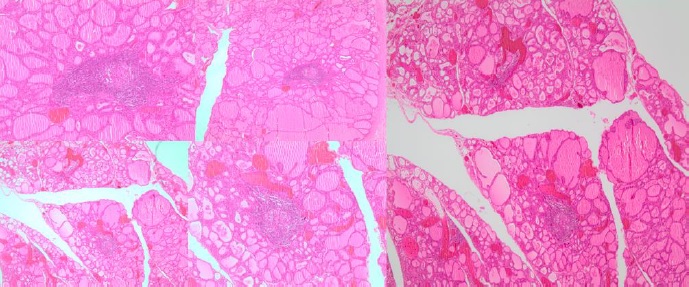Abstract
Breaking Bad news in the health care environment are defined as pieces of information delivered to patients, that can drastically (and often negatively) modify their life course and expectations for the future. Even though communicating bad news has great relevance in the clinical scenario, the training health care professionals need to acquire this skill is often deficient or overlooked. Skilfull delivery of bad news can provide confort for patients and their families, while poor communication of such information can generate negative emotional reactions, wrong perspectives about clinical prognosis and even lead to legal troubles for practitioners. Many protocols and tools for successfully delivering bad news have been described in literature, as well as diverse academic strategies for teaching such tools. The present article proposes a reflection about the use of simulated scenarios for training in bad news delivery, using the SPIKES protocol.
2. Sarwar MZ, Rehman F, Fatima SM, et al. Breaking bad news skill of postgraduate residents of tertiary care hospital of Lahore, Pakistan: A cross-sectional survey. J Pak Med Assoc [Internet]. 2019;69(5):695–9. Available from: https://www.semanticscholar.org/paper/Breaking-bad-news-skill-of-postgraduate-residents-A-Sarwar-Rehman/cc5609b398e8fa55a51f39fe26d378a8bb55cd14
3. Nielsen PE, Munroe M, Foglia L, et al. Collaborative Practice Model: Improving the delivery of bad news. Clin J Oncol Nurs. 2012;22(1):23–7
4. Franklin J, Berkey D, Joseph P, et al. Delivering bad or life-altering news. Am Fam Physician [Internet]. 2018;98(2):99–104. Available from: http://www.embase.com/search/results?subaction=viewrecord&from=export&id=L623051532
5. Karam VY, Barakat H, Aouad M, et al. Effect of a simulation-based workshop on breaking bad news for anesthesiology residents: An intervention study. BMC Anesthesiol. 2017;17(1):4–9
6. Huarcaya-victoria J, Infanto SD, Nacional H, et al. El duelo y cómo dar malas noticias en medicina. An Fac med [Internet]. 2019;80(1):86–91. Available from: http://www.scielo.org.pe/scielo.php?script=sci_arttext&pid=S1025-55832019000100016
7. Martín Hernández I, Trujillo Matienzo C. Comunicación de malas noticias a pacientes con enfermedades neurodegenerativas: habilidades del personal médico. Rev Latinoam Bioética [Internet]. 2009;9(2):77–85. Available from: http://portal.amelica.org/ameli/jatsRepo/127020306006
8. Eid A, Petty M, Hutchins L, et al. Breaking bad news: Standardized patient intervention improves communication skills for hematology-oncology fellows and advanced practice nurses. J Cancer Educ. 2009;24(2):154–9
9. Ramírez-Ibáñez MT, Ramírez-de la Roche OF. Cómo comunicar malas noticias en la práctica médica. Atención Fam [Internet]. 2015;22(4):95–6. Available from: https://www.elsevier.es/es-revista-atencion-familiar-223-articulo-como-comunicar-malas-noticias-practica-S1405887116300608
10. Baile W, Buckman R, Lenzi R, et al. SPIKES--A Six-Step Protocol for Delivering Bad News: Application to the Patient with Cancer. Oncologist [Internet]. 2000;5(4):302–11. Available from: http://theoncologist.alphamedpress.org/content/5/4/302.long
11. Cleland JA, Abe K, Rethans JJ. The use of simulated patients in medical education: AMEE Guide No 42 1. Med Teach. 2009;31(6):477–86
12. Parvan K, Hosseini FA, Bagherian S. Simulated patient and role play methodologies for communication skills training in an undergraduate medical program: Randomized, crossover trial. Educ Heal [Internet]. 2018;31:10–6. Available from: http://www.educationforhealth.net/article.asp?issn=1357-6283;year=2018;volume=31;issue=1;spage=10;epage=16;aulast=Taylor
13. Negri EC, Mazzo A, Martins JCA, et al. Simulação clínica com dramatização: Ganhos percebidos por estudantes e profissionais de saúde. Rev Lat Am Enfermagem. 2017;25
14. Dosanjh S, Barnes J, Bhandari M. Barriers to breaking bad news among medical and surgical residents. Med Educ. 2001;35(3):197–205
15. Brown VA, Parker PA, Furber L, et al. Patient preferences for the delivery of bad news - the experience of a UK Cancer Centre. Eur J Cancer Care (Engl). 2011;20(1):56–61
16. Oikonomidou D, Anagnostopoulos F, Dimitrakaki C, et al. Doctors’ Perceptions and Practices of Breaking Bad News: A Qualitative Study From Greece. Health Commun. 2017;32(6):657–66
17. Abbas S, Muhammad S, Mubeen S, et al. Awareness of palliative medicine among Pakistani doctors: a survey. J Pak Med Assoc. 2004; 54:195-8
18. Jameel A, Noor SM, Ayub S. Survey on perceptions and skills amongst postgraduate residents regarding breaking bad news at teaching hospitals in Peshawar, Pakistan. JPak Med Assoc. 2012; 62:585
19. Rat A, Ricci L, Guillemin F, et al. Development of an online formative self-assessment tool for physicians to practice breaking bad news: the Breaking bad news Tool (BRADNET). JMIR Med Educ. 2018;4(2):1–27
20. Beigzadeh A, Bahmanbijari B, Sharifpoor E, et al. Standardized patients versus simulated patients in medical education: are they the same or different. J Emerg Pract Trauma [Internet]. 2015;2(1):25–8. Available from: http://www.jept.ir/article_10855_cb64e5d76610f95fd11365cde44e499b.pdf
21. Kaplonyi J, Bowles KA, Nestel D, et al. Understanding the impact of simulated patients on health care learners’ communication skills: a systematic review. Med Educ. 2017;51(12):1209–19
22. Laughey W, Sangvik Grandal N, M Finn G. Medical communication: the views of simulated patients. Med Educ. 2018;52(6):664–76
23. Wallace J, Rao R, Haslam R. Pacientes simulados y exámenes clínicos estructurados objetivos: revisión de su uso en educación médica. Avances en el tratamiento psiquiátrico. Prensa de la Universidad de Cambridge; 2002; 8 (5): 342–8.
This journal is registered under a Creative Commons Attribution 4.0 International Public License. Thus, this work may be reproduced, distributed, and publicly shared in digital format, as long as the names of the authors and Pontificia Universidad Javeriana are acknowledged. Others are allowed to quote, adapt, transform, auto-archive, republish, and create based on this material, for any purpose (even commercial ones), provided the authorship is duly acknowledged, a link to the original work is provided, and it is specified if changes have been made. Pontificia Universidad Javeriana does not hold the rights of published works and the authors are solely responsible for the contents of their works; they keep the moral, intellectual, privacy, and publicity rights.
Approving the intervention of the work (review, copy-editing, translation, layout) and the following outreach, are granted through an use license and not through an assignment of rights. This means the journal and Pontificia Universidad Javeriana cannot be held responsible for any ethical malpractice by the authors. As a consequence of the protection granted by the use license, the journal is not required to publish recantations or modify information already published, unless the errata stems from the editorial management process. Publishing contents in this journal does not generate royalties for contributors.



